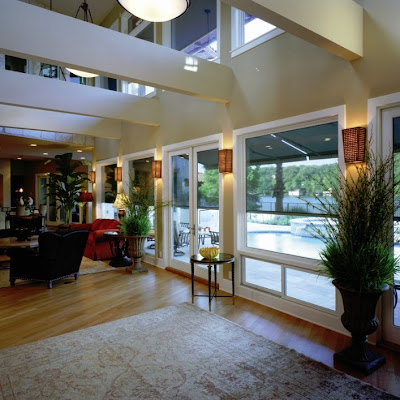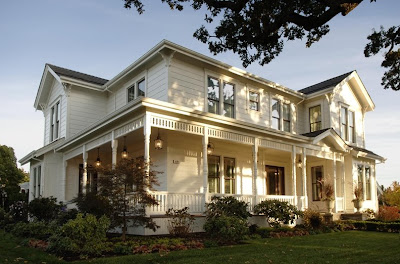(NewsUSA) - Large windows make homes feel airy and open -; but windows also let in sun and allow heat transfer, damaging furniture and raising energy bills.

Controlling the way light enters the home can make homes more comfortable and less expensive, not to mention more attractive. The experts at Durasol (www.durasol.com), a 25-year-old business that specializes in retractable awnings, solar screens and stationary awnings, offers these suggestions to common problems:
- Reduce solar glare -; Bright sun can fade furniture and carpets. Consider closing the blinds on one side of the house in the morning, as the sun rises, and on the other side of the house when it sets, to help avoid the brightest rays.
You might want to consider installing interior solar shades. Durasol's DuraShade retractable solar screen systems offer indoor comfort, increased privacy and protection from interior fading. Better yet, they blend in with any home while offering protection against solar glare and heat gain. You can even motorize them, so you can lower the shades in an entire room with the push of a button. Solar screens that are installed and used in Southern- and Western-facing windows can cool the home by as much as 8-16 degrees F, helping to lower energy costs. Unlike drapes, solar screens are see-through -; so you can enjoy the view without letting in glare or heat.
- Reduce heat gain -; If the glaring sun makes rooms too warm, consider installing exterior solar shades. Exterior-mounted shades offer some benefits over interior shades, because they block the heat before it enters the home. In the winter, exterior shades help protect against winter glare from snow and ice.
- Increase outdoor living space. Retractable window and roof awnings help keep the sun from entering your home, and also add shade to outdoor living space. With an awning over a porch or deck, homeowners can make a wonderful outdoor entertaining space. Awnings are more flexible than building a permanent roof over your porch, which permanently blocks light. Durasol awnings allow you to control how and when light enters your home.

Controlling the way light enters the home can make homes more comfortable and less expensive, not to mention more attractive. The experts at Durasol (www.durasol.com), a 25-year-old business that specializes in retractable awnings, solar screens and stationary awnings, offers these suggestions to common problems:
- Reduce solar glare -; Bright sun can fade furniture and carpets. Consider closing the blinds on one side of the house in the morning, as the sun rises, and on the other side of the house when it sets, to help avoid the brightest rays.
You might want to consider installing interior solar shades. Durasol's DuraShade retractable solar screen systems offer indoor comfort, increased privacy and protection from interior fading. Better yet, they blend in with any home while offering protection against solar glare and heat gain. You can even motorize them, so you can lower the shades in an entire room with the push of a button. Solar screens that are installed and used in Southern- and Western-facing windows can cool the home by as much as 8-16 degrees F, helping to lower energy costs. Unlike drapes, solar screens are see-through -; so you can enjoy the view without letting in glare or heat.
- Reduce heat gain -; If the glaring sun makes rooms too warm, consider installing exterior solar shades. Exterior-mounted shades offer some benefits over interior shades, because they block the heat before it enters the home. In the winter, exterior shades help protect against winter glare from snow and ice.
- Increase outdoor living space. Retractable window and roof awnings help keep the sun from entering your home, and also add shade to outdoor living space. With an awning over a porch or deck, homeowners can make a wonderful outdoor entertaining space. Awnings are more flexible than building a permanent roof over your porch, which permanently blocks light. Durasol awnings allow you to control how and when light enters your home.








.jpg)

.jpg)
.jpg)
.jpg)
.jpg) Deb
Deb 
.jpg) Left to themselves, the girls get out of control!
Left to themselves, the girls get out of control!
.jpg)
.jpg)


 We are so excited to welcome Chris and Tamra as they have relocated to their new home on
We are so excited to welcome Chris and Tamra as they have relocated to their new home on 



















